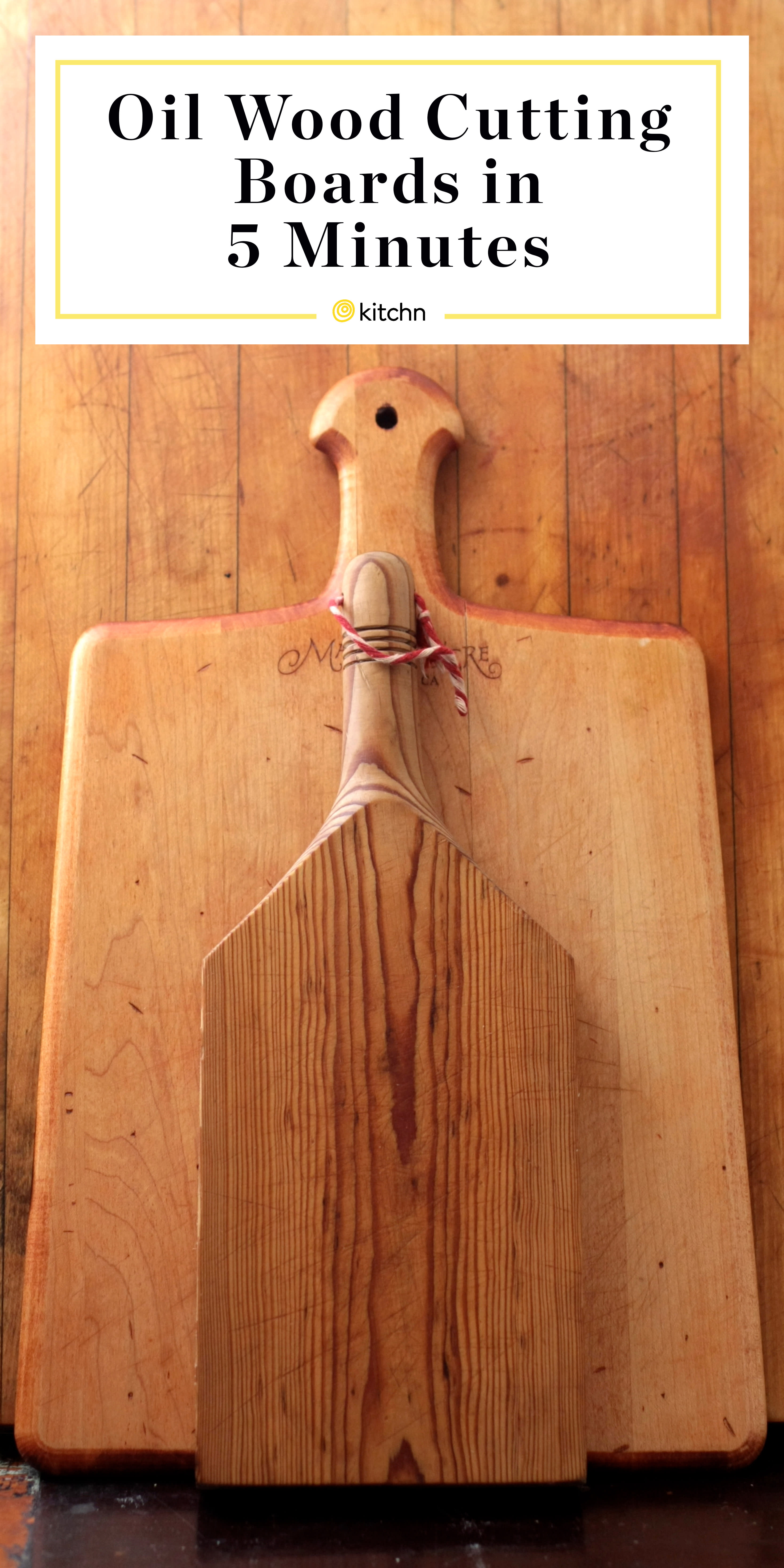
This is a non-toxic non-drying oil that is commonly used on butcher block tables and cutting boards. Use the cheesecloth to apply the mixture of varnish and water directly to the top of the cutting board until it begins to seep out of the bottom of the board.

Pour out a small dollop of finish onto a clean cotton rag.
How to seal a cutting board. To keep your cutting board in prime condition seal it once a month with oil. Some oils such as linseed and tung oil harden the wood and seal it. Gently Pour The Oil Onto Your Board One Section At A Time Start in a corner of your board and section by section pour your oil directly onto your wood cutting board in the direction of the grain.
Going in the direction of the grain is important because it helps you get. Make sure the board is clean and dirt free. Make sure that the board has been previously sanded.
For a total of 4 coats recommended on a medium sized cutting board mix 30ml 1 fl oz. Or 2 tbsp of Tung Oil and the same quantity of solvent in a clean recipient. The mix can be kept for a long time if you prepared too much for your needs and can be used to apply a maintenance.
Proper Cleaning and Washing Wash your cutting board with soap and warm water and scrub well. The volume of water and mechanical scrubbing is more important than soap in flushing bacteria and other food particles off the board. Rub a 2 in 51 cm dollop of finish on each side of the cutting board.
Pour out a small dollop of finish onto a clean cotton rag. Using the rag rub the finish onto the cutting board in long horizontal strokes. Make sure to cover the entire surface of the cutting board.
So you completed a great cutting board design and now you need to apply a food safe finish on your cutting board. In this video Andrew shows you his 1favo. This is a non-toxic non-drying oil that is commonly used on butcher block tables and cutting boards.
It must be re-applied as often as monthly and will become brittle and crack if not maintained so be sure to keep a bottle on hand. This sweet-smelling finish is non-toxic and resists water and alcohol. Buff to a Shine.
Once the piece is dry use a rag to buff to a light shine. This is a really simple finish but it is not permanent. Over time you notice the finish will wear off a bit and the cutting board will begin to look like it need another coat.
Apply a few coats of mineral oil to the board to seal it. Mineral oil will bring out the beautiful wood grain protect it from moisture and its food safe. Nor will the finish continue to look nice after numerous knife cuts.
If the cutting board begins to warp due to the water contact on just one side turn it over and it will slowly flatten out. If you are selling cutting boards and want them to look nice apply wax or some type of oil finish. You can safely use baking soda to remove stubborn stains from a cutting board or butcher block.
Sprinkle baking soda over the offensive spot and. Lay some newspaper on a flat working surface. Lay the cutting board on top of the newspaper.
Use the cheesecloth to apply the mixture of varnish and water directly to the top of the cutting board until it begins to seep out of the bottom of the board. Set the board on a vertical side to dry overnight. For everyday use wood is the best cutting board material by a long shot.
Not only is it extra kind to your knife blade its also the safest material and its gorgeous too. That said a good-quality wooden cutting board requires a bit of maintenance from time to time to stay in tip-top cutting shape. Heres how to season your board for a long happy healthy relationship.
Sealing a New Cutting Board. Both bamboo and wood cutting boards need to be sealed before use to prevent moisture from seeping into the fibers and causing damage. You can seal a cutting board with the same type of oil youll use to maintain it.
Sealing is essential for all new wood and bamboo cutting boards- even those that are sold as pre-seasoned. If your bamboo cutting board is a new one then you will have to treat it first. Seal and condition the new untreated board using a food grade mineral oil.
Take oil and apply with a clean rag. Using the cloth rub across the board thoroughly. Seal the Cutting Board If you like you can use the remainder of the beeswax to seal the cutting board making it easier to clean and longer lasting.
To do so dilute one part of the melted beeswax with three parts food-grade mineral oil while applying heat. Seal the Cutting Board To protect your cutting board you have to apply oil to seal the surface of the hardwood. Squeeze a liberal amount of butcher block wood oil or food-grade mineral oil onto a cloth rag.
Apply the oil to all sides of the wood by rubbing thoroughly.